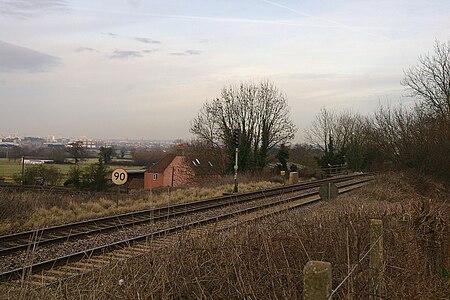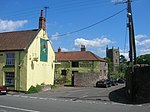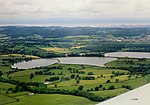Long Ashton railway station

Long Ashton railway station was a railway station on the Bristol to Exeter line, 3.5 miles (5.6 km) southwest of Bristol Temple Meads, serving the village of Long Ashton in North Somerset, England. There were two stations on the site, the first, called "Ashton", opened in either 1841 or 1852 and closed in 1856. The second station, originally known as "Long Ashton Platform" before being renamed as "Long Ashton" in 1929, was operational from 1926 to 1941. The site is now partly under the A370 Long Ashton Bypass, and there are no visible remains of the station. There is local support for the station to be reopened, possibly sited further to the west, and possibly as part of the University of Bristol's proposed Fenswood Farm development.
Excerpt from the Wikipedia article Long Ashton railway station (License: CC BY-SA 3.0, Authors, Images).Long Ashton railway station
A370,
Geographical coordinates (GPS) Address External links Nearby Places Show on map
Geographical coordinates (GPS)
| Latitude | Longitude |
|---|---|
| N 51.42716 ° | E -2.64961 ° |
Address
Long Ashton
A370
BS41 9LP
England, United Kingdom
Open on Google Maps







